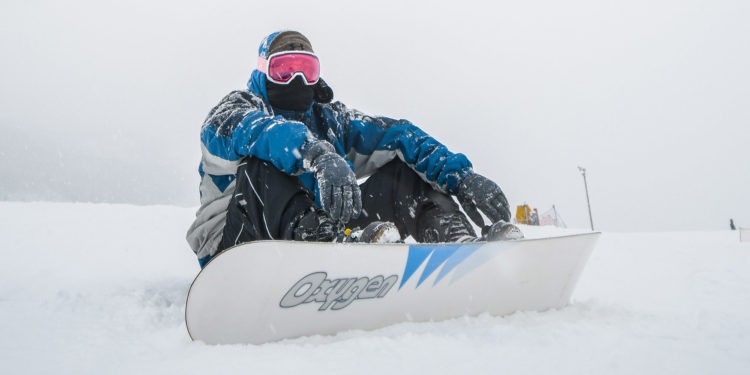Winter Sports Injuries

A SLIPPERY SLOPE
Every year during this time, the urge to get outside and enjoy the winter wonderland comes upon us. A few hours on the slopes, ice rink or sledding calls our name. Before heading out, it is important to take some precautions to keep yourself safe and sound.
Winter sports injuries can include sprains, strains, dislocations, and fractures. These injuries usually happen at the end of the day, when people overexert themselves on the last run before the day’s end. Most injuries can easily be prevented if participants prepare for their sport by keeping in good physical condition, staying alert, and stopping when they are tired or in pain.
WINTER SPORTS SAFETY TIPS
Following these injury prevention guidelines can be the key to avoiding common injuries when you are outside exercising.
Take Regular Breaks: While enjoying the winter fun, take frequent breaks to hydrate, refuel and recover. This will give overworked muscles a break and allow them to keep going.
Watch the Weather: Winter weather can be quite unpredictable, check the forecast before you head out. Inclement conditions increase the likelihood of a sports injury.
Don’t Go Alone: When participating in winter sports, minimize the risk by bringing someone with you. Stay close enough to one another so you can react quickly if there’s an accident.
Do Warmup Exercises: Your muscles and heart need to be in good shape before any type of physical activity. Do warmups for intense wintertime activities such as skiing, skating or snowboarding. Warm up cold muscles with some light exercise or stretching.
Use Protective Equipment: Winter sports injuries can be minimized or prevented by wearing reliable protective equipment. The most essential pieces are a helmet, goggles and UV sunglasses for skiing and snowboarding.
Check Your Gear: Wear multiple layers that can insulate your body and be removed as needed. Make sure all your equipment is in good condition without any obvious defects. This includes your skis, snowboard, ice skates, sled and anything else you’re relying on to work properly.
Follow Proper Techniques: Many injuries occur because the skier, skater or snowboarder didn’t have the right form. Spend time learning from a qualified instructor before participating or research online to learn techniques for winter sports safety.
Experience Level: Know your abilities and stick to the trails that are suited for them. It is important to recognize your own limitations. Learn the rules of the sport, whether it be an ice-skating rink or on the ski slopes.
Wear Appropriate Clothing: For winter sports wear outerwear designed for cold, wet conditions and layer clothing underneath to add warmth. Clothing needs to be flexible enough to allow you to move freely without being constrictive. Invest in clothing that wicks moisture away from your body, avoiding cotton clothing next to your skin as it will absorb moisture, losing any insulating value.
Know Your Surroundings: Many winter sports injuries occur because someone didn’t anticipate a tree or rock on the ski slope or didn’t notice a thin patch of ice during a hockey game. Knowing what’s around you helps you figure out where to go – and which areas to avoid.
Limitations: Even after following every skiing, skating or snowboarding injury prevention guideline, you could end up feeling exhausted or experience pain. In either case, it’s time to call it a day. Don’t push yourself during “one last run” when you’re already tired. This is when accidents can easily happen.
COMMON OUTDOOR INJURIES
Almost 200,000 people were treated at hospitals, doctor’s offices, and emergency rooms for injuries related to winter sports in 2018, according to the U.S. Consumer Product Safety Commission. From minor injuries to major ones, here are some common ones that can occur.

ANKLE SPRAINS & BREAKS
Every day, 25,000 Americans sprain or fracture their ankles. Tripping, twisting or rolling ankles – all things that can happen when playing winter sports. A fracture of the Talus bone – located above the heel bone on the outside of the ankle – is known as snowboarder’s ankle. “Some of these ankle injuries commonly seen with snowboarding can lead to chronic ankle pain and dysfunction,” shared Jay Rapley, M.D. of Rockhill Orthopaedic Specialists, Board Certified in Orthopedic Surgery and Board Certified in Sports Medicine. “Sometimes surgery is performed to fix a fracture with plates and screws or excision of bony fragments.”

KNEE INJURIES
The most common winter sports injuries are knee injuries. Severity can be as mild as a tendon strain or be the unfortunate tearing of a ligament. “The main stabilizing ligament of the knee, the ACL, is commonly torn during skiing accidents,” Dr. Rapley stated. “These injuries can be treated with or without surgery but require a long recovery time.”
SKIER’S THUMB
A common hand injury for skiers is a torn ligament in the thumb known as skier’s thumb. Making up 8%-10% of all skiing accidents, this happens when the skier falls on their outstretched hand while the ski pole is in the palm of their hand creating the force necessary to stress the thumb and stretch or tear the ligament.
ELBOW INJURIES
If you stretch out your hands to break a fall or prevent yourself from crashing into an obstacle while doing winter sports, a serious elbow injury can occur. “The most common result of an elbow injury is loss of elbow extension, or the ability to straighten your arm fully. This can happen with or without a fracture,” Dr. Rapley commented. “Wrist and elbow injuries can be more common in snowboarders than skiers, but these injuries do not always discriminate.”

DISLOCATED SHOULDER
When you hit a hard surface such as hard-packed snow or ice, you run the risk of dislocating your shoulder. This joint is more mobile than other joints and is less stable. Skiers are at greater risk of dislocating a shoulder, but other winter activities can be just as risky. Not only is a dislocated shoulder extremely painful but putting off medical care for too long could lead to a chronically unstable shoulder causing functional limitations.
MORE SEVERE INJURIES
CONCUSSIONS
More than 23,500 concussions result from playing winter sports every year. While most occur when skiing or snowboarding, anyone who falls while skating or playing hockey could also be at risk of a mild traumatic brain injury. One of the best ways to prevent concussions when on the slopes is by wearing a helmet. Dr. Jay Rapley shared, “Although there are no laws or regulations regarding the use of helmets, their use can reduce the risk of a head injury up to 30% in some studies.”
SPINAL INJURIES
Skiers and snowboarders are more prone to spinal injuries than other winter outdoor sports. Snowboarding and other high-intensity sports could cause back injury, so it’s important to adhere to skiing injury prevention tips. “These injuries to the back and spinal cord are the most devastating of all the injuries, as currently there is no cure for a spinal cord injury and every aspect of a patient’s life is affected in some way,” stated Dr. Rapley.
WINTER IS HERE
Don’t let an injury put your winter plans on ice. Winter means fun and the possibility of canceled school days for the young and young-at-heart. It also means serious complications and risks for people of all walks of life. Taking extra caution and using these injury prevention tips can help reduce the risk of serious injuries during your winter sports activities.

Jay Rapley, M.D.
Board Certified in Orthopaedic Surgery
Board Certified in Sports Medicine
Independent Medical Examiner, Knee & Hip, Shoulder & Elbow, Sports Medicine
www.rockhillortho.com
Sources: www.orthoinfo.aaos.org, www.sports-health.com, www.gebauer.com, www.cpsc.com






